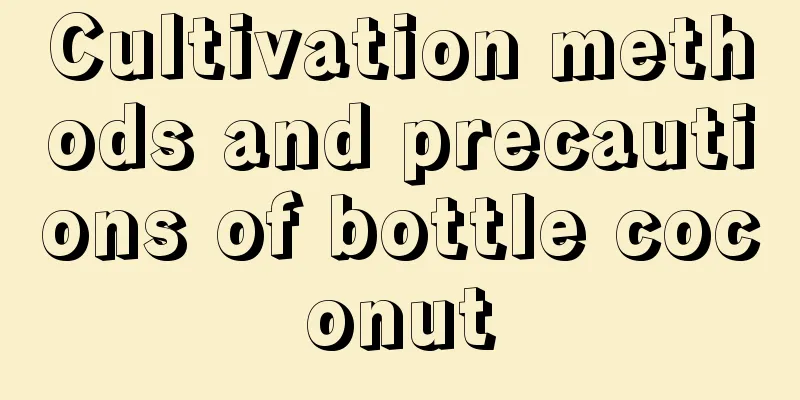Cultivation methods and precautions of bottle coconut

How to cultivate bottle coconutTemperature and lightBottle palm prefers a high temperature and sunny growing environment, and the winter temperature must not be lower than 10℃. Bottle palm grows faster in a high temperature and semi-shaded environment and avoids direct sunlight. Under the scorching sun, its leaves will become lighter or yellower, and will produce burnt leaves and black spots, which seriously reduces its ornamental value. It is relatively shade-tolerant, with the shade degree in summer and autumn usually around 60%, and brighter scattered light should be given in winter and spring. MoistureDuring the growth period, it is better to water the plant dry rather than wet. Always keep the soil in the pot moist. If the soil is too dry, the leaf tips will burn and reduce its ornamental value. At the same time, avoid excessive watering, otherwise it will easily cause leaf rot and lead to black spot disease, causing the leaves to turn yellow or even die. Water 2-3 times a day in summer, and spray water around the plants frequently to increase the air humidity in the growing environment, promote plant growth, and keep the leaves dark green and shiny. Reduce the amount of watering appropriately in winter to facilitate overwintering. FertilizationDuring the growth period of the bottle palm, top dressing is required regularly, which can be done once a month. Potassium fertilizer should also be applied once in late autumn to increase the plant's cold resistance. soilThe soil for cultivation should be loam or sandy loam that is rich in humus and has good drainage and air permeability. Things to note when growing bottle coconutThe bottle coconut palm grows slowly and is afraid of transplanting. When sowing, it is suitable to use nutrient bags or flower pots with good air permeability. After planting, shade and moisture are required until new roots grow before switching to full-sunlight normal management. During the vigorous growth period in summer and autumn, the soil needs to be kept moist. Bottle palms are prone to red spider mites during the rainy season, and can be sprayed with dichlorvos or DT to control them. |
<<: Cultivation methods and precautions of African ice grass
>>: What are the varieties of Paulownia
Recommend
When and how to repot Begonias, steps and precautions for repotting
Begonia repotting time The best time to repot beg...
The breeding methods and precautions of Jinyumantang
A Thousand Pieces of Gold, also known as a house ...
The whole process of raising pepper seedlings
Pepper is a must-grow vegetable in home cultivati...
Can geraniums be pruned in summer? When is the best time to prune?
Pruning the branches of geraniums can, on the one...
How to grow hydroponic spider plants vigorously
1. Water The most critical factor in hydroponic g...
What is Forsythia suspensa? Is it hot or cool?
1. What is Forsythia suspensa Forsythia is a deci...
Hibiscus cultivation methods and precautions
flowerpot The flowerpot should be breathable enou...
How much does coriander cost per pound (price introduction)
1. Price Introduction Its price is unstable. For ...
Key points for feeding and management of captive laying ducks
Laying ducks are ducks raised for the purpose of ...
What to do if there are bugs on poppy
1. Aphids Symptoms: This insect mostly appears in...
What fertilizer is good for Milan flowers?
The best time to fertilize Milan is during the gr...
The role of the general stick
The ornamental function of the general stick The ...
How to propagate Globe amaranth and what to pay attention to
Globe amaranth reproduction method There are two ...
Cultivation methods and precautions of ball orchid
Hoya has a strong fragrance and can adapt to low-...
How to Plant a Palmetto Tree
1. Site selection When planting palm trees, you s...









